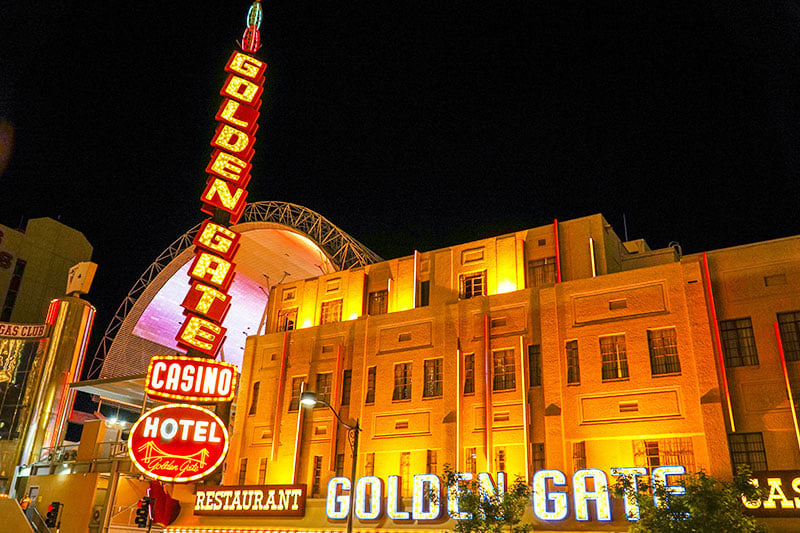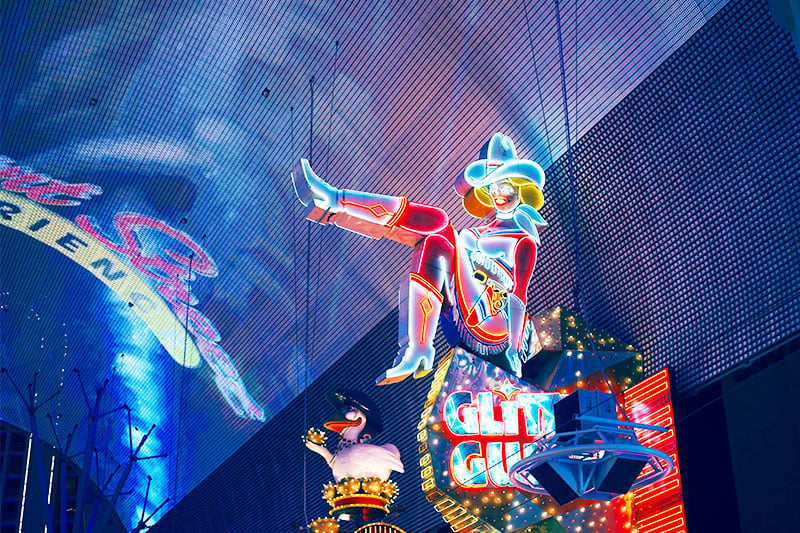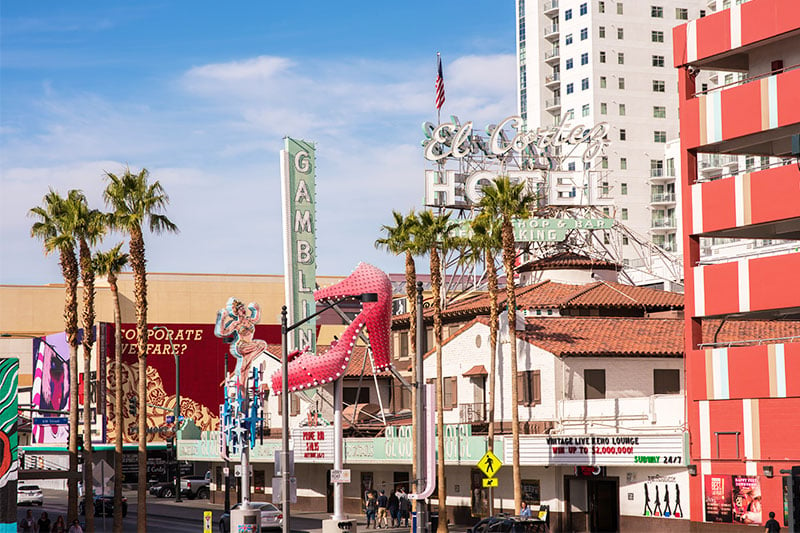From Legalized Gambling to The Downtown Project: The History of Fremont East
Before Las Vegas Boulevard was world-famous, Fremont Street was the epicenter of activity in Downtown Las Vegas as early as 1905. While Fremont Street later became known as the “Glitter Gulch” for its flashing neon casino signs, it didn’t receive the city’s first street light until 1931. Many of the signs locals remember from decades past are now housed at the Neon Museum, and more than a few of the oldest casinos and businesses no longer exist along the iconic boulevard.
Although Fremont Street has seen changes over its 113 year stretch, Downtown’s newest businesses still pay homage to the street locals inevitably respect. These days, the focus is on Fremont East, a figment of Downtown made up of six blocks that comprise the entertainment district outside the Fremont Street Experience. Here’s a look at Fremont Street’s evolution from past to present.
Early Beginnings

Fremont Street was named after John Charles Fremont, an explorer, 1856 presidential candidate, and general famous for losing the Fremont Cannon on his expedition through Sierra Nevada. The street remained a dirt road for decades before becoming the first paved road in Las Vegas. One of the first constructions on Fremont Street was the Union Pacific Railroad Depot, which once stood at the end of the street and brought many people to the area.
By 1931, Nevada legalized gambling, and the Northern Club received the first gambling license on Fremont Street. The legalization of gambling jump-started the area and brought thousands to Las Vegas who hoped to win big in the West. Gambling, however, was not new to the area: to this day the Golden Gate Casino, built in 1906, is the oldest casino on Fremont. By the 1950s, Las Vegas had many hotels and casinos, which included the Apache Hotel, Binion’s Horseshoe, Eldorado Club, Four Queens, Pioneer Club, and Golden Nugget, now known for its Tank Pool.
Before the freeways like U.S. 95 were built, Fremont Street also routed visitors through the area. A central location, Fremont Street was once the main shopping thoroughfare of the city. Sixth and Fremont streets had several department stores like Sears and J.C. Penney, which went out of business in the 1960s when The Boulevard Mall came to Paradise. The building that housed J.C. Penney later became a doctor’s office, which sat empty for decades before being re-occupied by Emergency Arts from 2013 to 2017.
Pop Culture Mentions

It didn’t take long for Fremont Street to find its way into pop culture. Las Vegas was the place for a quick divorce, gambling was in full swing, and prostitution was legal for decades.
By the 1960s, the Glitter Gulch was already iconic. In the Elvis Presley film “Viva Las Vegas,” the opening credits include footage of the famous street. A 1971 James Bond film called “Diamonds Are Forever” also took moviegoers through the neon lights with a chase scene. And these movie scenes were just the beginning: several music videos were also filmed on Fremont Street from artists like U2 and Ellie Goulding.
Fremont East, Entertainment District

By 1989, when the Mirage opened, The Strip had taken much of the business that once existed Downtown. This was the year when the City of Las Vegas suggested the Fremont Street Experience would include an LED canopy over four blocks of Fremont Street, transforming the area and separating the singular Fremont Street into two districts. Not everyone liked the idea, and some said the canopy ruined the once-iconic drive down Fremont Street.
A few years later in 2002, the city formed Fremont East Entertainment District, a six-block stretch that extended from Ogden Street to Carson and from Las Vegas Boulevard to Eighth Street. And just a few years later, the city approved a $5.5 million public improvement project meant to revitalize Downtown and bring more trendy bars and clubs to the area. The hope was that the new improvements would be more pedestrian-friendly and bring back vintage elements like the ruby slipper that made Fremont beloved in pop culture.
Fremont East Today

These days, Fremont East is a thriving sector of Downtown. Zappos CEO Tony Hsieh continued the revitalization started by the City of Las Vegas by founding the Downtown Project. Initiatives like these made it possible for more new businesses on Fremont Street. Developments like Container Park, a shopping center made entirely of shipping containers, and restaurants and bars like Commonwealth, Eat, Place on 7th, and Vegenation opened with high praise from locals and tourists alike. Although the Downtown Project has received mixed reviews, the initiative certainly did bring change to the area.
For the past six years, Life Is Beautiful descends on Downtown each September, closing off a sizable portion of Fremont Street and other areas for the music, culinary, and arts festival that has helped bring attention back to Downtown.
Meanwhile, El Cortez isn’t going anywhere because it’s on the National Register of Historic Places. Atomic Liquors, the oldest freestanding bar in Las Vegas, may have had a brief hiatus between 2010 and 2013, but after reopening, it’s now one of the hottest bars in the area.
It’s still yet to be determined where Fremont East is headed next, but if its history is any indication, Las Vegas is in for even more change to the iconic area.

